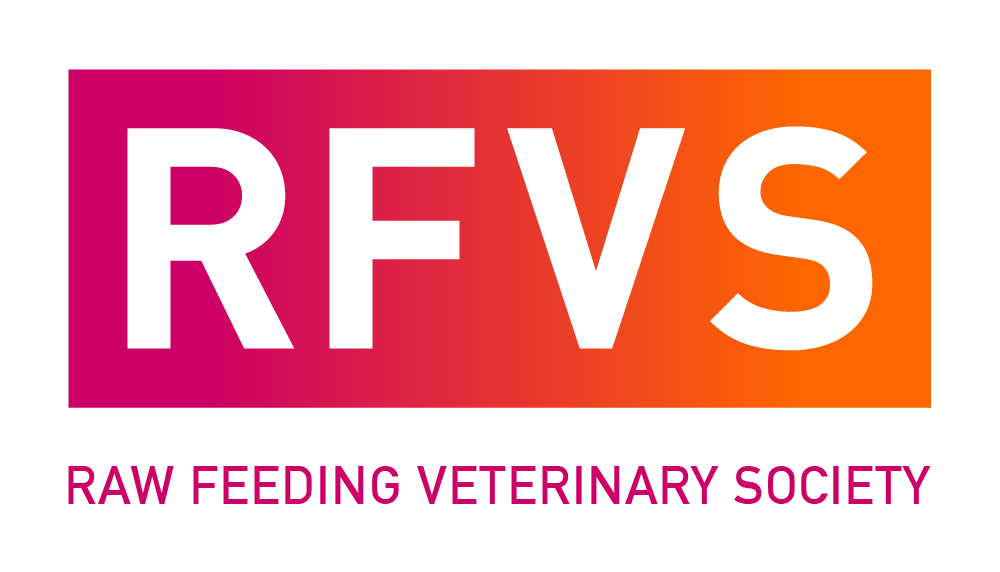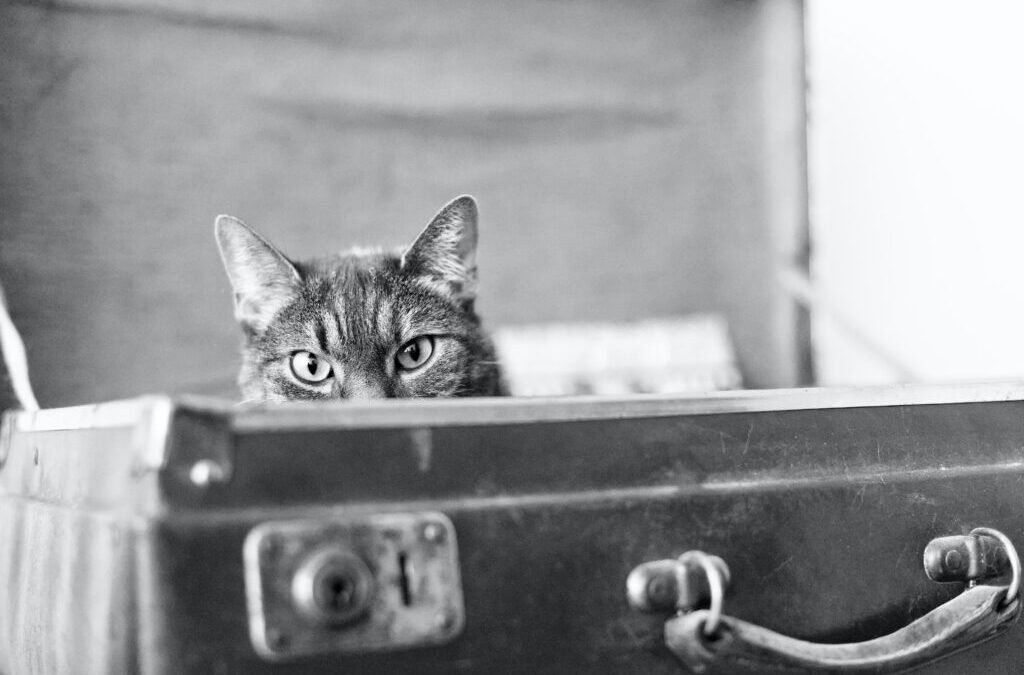The first constraint cat guardians put on the transition from the raw diet is ‘what they are going to do when they go on holiday?!’. The cat is likely to stay at home, and it’s not always easy to leave the cat alone for a weekend and get someone you trust to come to the house to look after the cat.
Add to this the raw diet factor and the fact that they will go from having one bowl of kibble for the whole day to needing at least 3 meals a day, makes many guardians rethink this dietary change. Worse still, if the transition takes too much time and effort, the desire to provide the best food may fade.
The key to encouraging more cats to eat the species-appropriate diet is to start by changing the way we relate to our cats. Often, we overlook how important it is for the cat to feel safe at times when a predator considers itself vulnerable: eating and then shedding its waste. There is a lot of resistance from people to change the simple life they had with their cat, an easy and practical animal, but where their emotional state is not taken into consideration.
To go on holiday with peace of mind and make sure our cat eats properly we must think about keeping ” the safety” and the routine, even when we are not at home.
A cat is as much a companion as a dog and creates bonds of trust that must be respected. The cat takes advantage of the security we bring to the environment but still needs to develop its instincts with stimuli that are often neglected. If we overlook these points, a cat’s ability to adapt can be reduced and behavioural problems can occur.
When we understand the real needs of our cats, we understand that they will need daily attention and that on holidays we will need someone to help us, be it a neighbour, a friend or a specialised service. It is always better for them to stay at home before going to a new place without their humans. If the duration of the holiday is longer than 15 days, we can consider taking the cat with us if it is not too badly tolerated.
There will be different scenarios during our holidays, about what we can do with our cat and that is why we will try to give solutions to the most common situations:
If he stays at home and eats a raw diet we can:
- Reduce the feedings to 2 times a day and have someone come and check on them. For a third feeding, you can use canned food, cooked food or freeze-dried food without carbohydrates.
- A daily visit but with a refrigerated automatic feeder that allows you to keep the food covered and a little cold.
- If the cat has never been addicted to kibble, you can combine wet food with kibble (best freeze-dried) for a few days and then go back to regular food. It is important to use quality feed that is not addictive in this case. I would always avoid fish flavours, which tend to be more attractive and addictive.
- If the cat comes with us, you can do the same as with dogs, and talk to the food supplier to change the direction of where to deliver the food.
- If this is not possible, you can use quality canned food with no additives or added sugars to feed your cat during those days.
- Use complete meals and avoid fish flavours unless the brand guarantees the source of the fish.
- With regard to environmental enrichment. If you leave home, leave some of your cat’s favourite herbs, some cardboard boxes and safe toys within reach, as well as an extra litter box to avoid accidents.
- If you use a water fountain, make sure it is cleaned before you leave and make sure it is well maintained. If you don’t dare leave the fountain plugged into the electricity, use several bowls of water, especially if you are travelling in the summer.
Remember that your cat senses your absence and the changes in routine, but if you think about some of these basic tips and what you know your cat likes, you can both enjoy the holidays.
Amaya Espíndola
—————————–
¿Qué hago con mi gato en vacaciones si come dieta cruda?
La primera limitación que ponen los tutores de gatos a la transición de la dieta cruda es, qué van a hacer cuando se vayan de vacaciones. El gato probablemente se quede en casa, no es una opción dejarlo un fin de semana solo y conseguir a alguien de confianza que vaya a la casa a cuidarle, no siempre es fácil de conseguir.
Si a esto le sumamos el factor de la dieta cruda y que pasarán de tener un plato de comida para todo el día a que sean necesarias 3 comidas diarias como mínimo, hace que muchos tutores se replanteen este cambio alimentario. Peor aún, si la transición les lleva mucho tiempo y esfuerzo la ganas de darle la mejor alimentación pueden desvanecerse.
El punto clave para conseguir que más gatos coman la dieta apropiada para su especie es empezar por cambiar la forma en la que nos relacionamos con nuestros gatos. Muchas veces, pasamos por alto lo importante que es que el gato se sienta seguro en los momentos en los que un depredador se considera vulnerable: comiendo y posteriormente despojándose de sus desechos. Hay mucha resistencia, por parte de las personas, a cambiar la vida sencilla que tenían con su gato, un animal fácil y práctico, pero en donde no se toma en cuenta su estado emocional.
Para irnos de vacaciones con tranquilidad y asegurarnos de que nuestro gato coma adecuadamente debemos pensar en conservar “lo seguro” y la rutina, incluso cuando no estamos en casa.
Un gato es tan compañero como lo puede ser un perro y crea vínculos de confianza que deben ser respetados. El gato se aprovecha de la seguridad que le aportamos al entorno pero aún así necesita desarrollar sus instintos con estímulos que muchas veces se dejan de lado. Si descuidamos estos puntos, la capacidad de adaptación de un gato puede verse reducida y los problemas de comportamiento pueden hacerse presentes.
Cuando comprendemos las verdaderas necesidades de nuestros gatos, entendemos que necesitarán de una atención diaria y que en vacaciones deberemos contar con alguien que nos ayude, ya sea un vecino, amigo o un servicio especializado. Siempre es mejor que se queden en casa antes de ir a un nuevo lugar sin sus humanos. Si las vacaciones son de larga duración, de más de 15 días, podemos plantearnos llevar al gato si este no lo lleva demasiado mal.
Existirán diversos escenarios durante nuestras vacaciones, sobre lo que podemos hacer con nuestro gato y es por eso que intentaremos dar soluciones a las situaciones más comunes:
Si se queda en casa y come dieta cruda podemos:
- Reducir las tomas a 2 veces al día y que alguna persona venga a verles. Para una tercera toma se puede usar latas, comida cocida o comida seca liofilizada sin carbohidratos
- Una visita diaria pero con comedero automático refrigerado que te permita mantener al cubierto la comida y con algo de frío
- Si el gato nunca fue adicto al pienso, se puede combinar comida húmeda con pienso (mejor liofilizado) durante esos días y luego volver a la comida habitual. Es importante usar piensos de calidad que no sean adictivos en este caso. Evitaría siempre los sabores a pescado que suelen ser más atractivos y adictivos
- Si el gato se va con nosotros, se puede hacer cómo con los perros, y hablar con el distribuidor de comida para cambiar la dirección a dónde llevar la comida.
- Si esto no fuera posible se pueden utilizar latas de calidad sin aditivos ni azúcares añadidos para alimentar a nuestro gato durante esos días.
- Utilizar latas completas y evitar sabores de pescado a menos que la marca garantice la fuente del mismo.
- Con respecto al enriquecimiento ambiental. Si te vas de casa déjale al alcance algunas de sus hierbas favoritas, algunas cajas de cartón y juguetes seguros, además de algún arenero extra para evitar accidentes.
- Si usas una fuente de agua, asegúrate de tenerla bien limpia antes de salir y de avisar de que hay que mantenerla bien. Si no te atreves a dejar la fuente conectada a la electricidad, utiliza varios cuencos con agua, especialmente si el viaje es verano.
Recuerda que tu gato siente tu ausencia y los cambios en la rutina pero, si piensas en algunos de estos consejos básicos y algo que tu sepas que le gusta a tu gato, ambos podrán disfrutar de las vacaciones.
Amaya Espíndola
Photo by Valérie Ungerer on Unsplash

